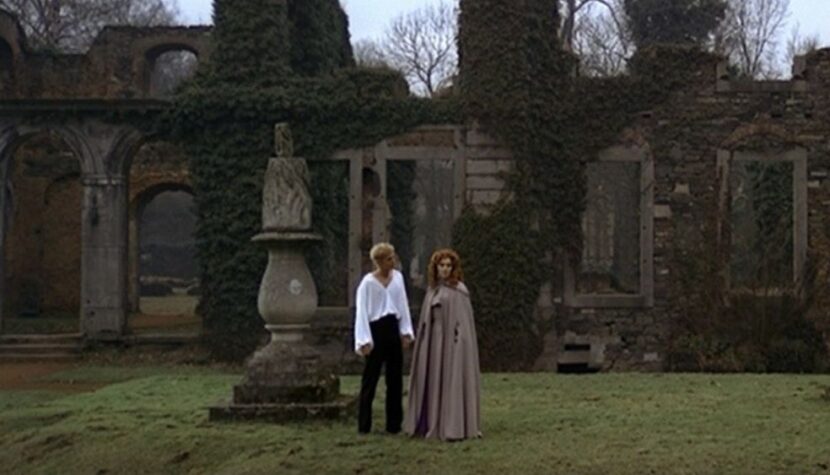MALPERTUIS. The Fall of the House of Cassavius

The adaptation of the well-known novel by Jean Ray had the makings of a great film, but…
When his ship docks at the port, young sailor Jan disembarks and wanders through the town until he eventually comes across an old mansion called Malpertuis. In this secluded dwelling, he encounters a gallery of oddities, including his sister Nancy and his bedridden uncle Cassavius. The dying patriarch intends to distribute his wealth among the numerous inhabitants of Malpertuis, but on the condition that they swear never to leave the place. The inheritance will then go to the last living couple inhabiting the house full of labyrinthine corridors, staircases, and secret rooms. In the claustrophobic building, a series of brutal murders occur, and some of the residents of Malpertuis (animal stuffer, local madman, three women in black, etc.) seem to be hiding a dark secret. Jan falls in love with the beautiful Euriale and tries to unravel the mystery of Cassavius’s house.

Malpertuis is an adaptation of Jean Ray’s novel (1887–1964), actually Raymundus Johannes de Kremer – a Belgian writer, comic book writer, and journalist who was said to owe much to Edgar Allan Poe. There is some truth in this: Malpertuis may evoke associations with The Fall of the House of Usher. Belgian director Harry Kümel secured funding for the adaptation of Ray’s novel following the success of the erotic horror film Daughters of Darkness (1971). In 1972, the English-language version of Malpertuis (cut by an American distributor who removed 20 minutes of material) qualified for the main competition at the Cannes Film Festival but lost the race for the Golden Palm to the films The Working Class Goes to Heaven by Elio Petri and The Mattei Affair by Francesco Rosi. The following year saw the release of Kümel’s full director’s cut of the film, but it also failed to achieve success – neither commercially nor critically.
The creators managed to engage Orson Welles himself for the role of Cassavius, but collaborating with the legendary filmmaker proved to be extremely difficult. Welles spent only a few days on set, mostly drunk and irritable, driving the crew crazy: he insisted on close-ups of his face, forgot his lines, disrupted other actors, and interfered with the director’s work. On the last day, he apologized for his whims, finished shooting, and left the film set. In the English version, Welles speaks with his own voice, but in the director’s version, the actor was dubbed in Flemish, further weakening his caricatured performance. Equally poor and wooden is Mathieu Carrière as Jan. The true star of the film, however, is Susan Hampshire – a British actress who portrayed five characters (including three main ones: Nancy, Euriale, and Alice/Alecto) and excelled in each of them.

Understanding the plot without knowledge of the literary original can prove to be very difficult – and this applies to both the producer’s and director’s versions. The film remains unclear to the end, and the ending does not resolve whether all of this really happened, or if it was just Jan’s dream or hallucinations. However, this ambivalence is not a sign of Kümel’s mastery but of his incompetence, and the evidence of indecision is the presence of three (!) consecutive plot twists, none of which brings satisfaction. Therefore, the greatest assets of Malpertuis are its technical elements: the baroque set design by Pierre Cadiou, excellent cinematography by Gerry Fisher, and the disturbing music by Georges Delerue. Together, they create a dense, grotesque atmosphere reminiscent of the excellent Czechoslovak horror film Morgiana (1972) by Juraj Herz, but they do not elevate the whole above the level of an “academic” curiosity. An interesting failure.

